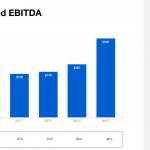Some folks have begun to suspect that the coordinated hawkish rhetoric by DM central bankers which began to take on a new sense of urgency on June 27 in Sintra, Portugal might be tied to the pursuit of a “shadow” mandate.
More colloquially, quite a few observers are convinced that the seemingly inexplicable hawkish tilt in the face of still lackluster inflation has exactly nothing to do with the purportedly “transitory” nature of the incoming data and everything to do with pricking asset bubbles by leaning aggressively against excessively loose financial conditions.
Regardless of what you believe about central bankers’ motivation for what, until last week anyway, looked like a mad dash to tighten policy, what you can’t deny is that there are signs that going on nine years of accommodative policy has resulted in readily apparent instability.
That brings us to the following chart and color from Barclays which we present without further comment:
Financial stability concerns have also contributed to central banks’ urgency to normalize on the back of solid global growth; hence, central bank communication on this front will continue to be watched. For example, several members of the FOMC raised concerns about financial stability risks, the BoC mentioned elevated levels of household indebtedness, and imbalances in the housing market as the most important vulnerabilities in Canada’s financial system, the RBA noted that “vulnerabilities related to household debt and housing market more generally have increased”, and the RBNZ pointed to “housing market vulnerabilities, bank funding pressures and dairy sector indebtedness” as key risks to financial system.
Indeed, measures of financial stability look stretched for some of these economies, such as household debt and the housing markets in Australia and Canada and equity valuations in the US(Figure 4).













Leave A Comment